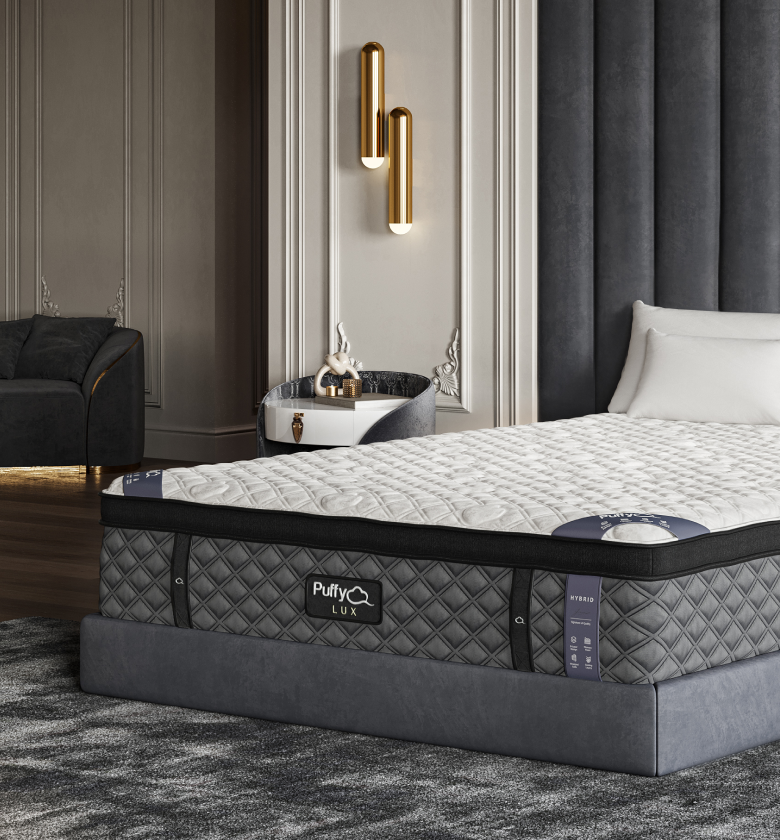The concept of a DIY mattress is appealing for those looking for a customized sleep experience tailored to their specific preferences. Whether it’s about achieving the perfect firmness level, using specific materials, or even tackling a unique bed size, building your own mattress can be a solution.
While brands like Puffy provide a range of mattresses designed for different sleeping needs, the DIY route offers a unique opportunity to personalize every aspect of your sleep surface.
Can You Make Your Own Mattress?
Yes, making your own mattress is entirely possible and can be a fulfilling DIY project.
Key Considerations:
- Skills and Tools: Basic sewing and measuring skills, along with essential tools, are needed.
- Material Sourcing: The quality of the materials will significantly impact the final product.
- Time and Effort: Be prepared to invest time and effort into the project.
How to Make a Mattress
Creating a mattress from scratch involves several key steps, from selecting materials to assembling the final product.
Step-by-Step Process:
- Choose the Mattress Type: Decide whether you want a foam, innerspring, or hybrid mattress.
- Gather Materials: Source quality materials like foam, springs, batting, and fabric.
- Cut and Layer Materials: Cut the materials to size and layer them according to your chosen mattress type.
- Sew a Mattress Cover: Create a cover from durable fabric and sew it to encase the layers.
- Assemble Layers: Place the layered materials inside the cover and sew it shut.
- Add Finishing Touches: Consider adding tufting or quilting for additional comfort and aesthetic appeal.
Selecting the Right Materials for Your DIY Mattress
The choice of materials is crucial in determining the comfort, support, and durability of your DIY mattress.
Material Options:
- Foam Layers: Memory foam, latex foam, or polyurethane foam offer different comfort levels.
- Spring Coils: If opting for an innerspring mattress, quality springs are essential.
- Cover Fabric: Durable fabrics like cotton or a blend are ideal for longevity and comfort.
While selecting materials, consider the advanced foams used in Puffy mattresses as a benchmark for quality and comfort.
Customizing Your DIY Mattress
One of the most significant advantages of a DIY mattress is the ability to customize it to your exact preferences.
Customization Ideas:
- Firmness Level: Adjust the type and thickness of foam or the number of springs.
- Size and Shape: Create a mattress that fits non-standard bed frames or unique spaces.
- Hypoallergenic Options: Choose materials that cater to allergies or sensitivities.
Advantages of Making Your Own Mattress
Building your own mattress comes with several benefits, from customization to potential cost savings.
Benefits Overview:
- Personalized Comfort: Tailor the mattress to your preferred firmness and support.
- Cost-Effective: Potentially lower cost than purchasing a high-end mattress.
- Satisfaction: The DIY process can be highly rewarding and fulfilling.
Interested in how Puffy stacks up against other brands? Check out our mattress comparisons: Puffy vs Purple, Puffy vs Nectar, Puffy vs Casper, Puffy vs Leesa, Puffy vs Saatva, Puffy vs DreamCloud, and Puffy vs Tuft and Needle.
Challenges in DIY Mattress Making
While making your own mattress can be advantageous, it also comes with its set of challenges.
Potential Difficulties:
- Time-Consuming: It can be a lengthy project, especially for beginners.
- Skill Level: Requires a certain level of craftsmanship and knowledge about mattress construction.
- Quality Control: Achieving professional-level quality can be challenging.
Comparing DIY Mattresses with Commercial Mattresses
Understanding how a homemade mattress stacks up against commercially available options like Puffy can help set realistic expectations.
Comparison Points:
- Quality and Durability: Commercial mattresses often have advanced construction and quality assurance.
- Comfort and Support: Professional mattresses are designed based on extensive research and ergonomic studies.
- Warranty and Trial Periods: Most commercial mattresses come with warranties and sleep trials, which DIY mattresses lack.
Check out Puffy mattress reviews from real customers and see how we compare with other brands.
Maintenance and Care for Your DIY Mattress
Proper maintenance is key to extending the life and maintaining the comfort of your DIY mattress.
Maintenance Tips:
- Regular Cleaning: Vacuum and spot-clean the mattress regularly.
- Rotation: Rotate the mattress periodically to distribute wear evenly.
- Protection: Use a mattress protector to safeguard against spills and stains.
When to Opt for a Commercial Mattress Instead
There are scenarios where purchasing a commercial mattress may be more beneficial than building one.
Considerations for Buying:
- Complex Needs: If you have specific medical or ergonomic needs, a professionally designed mattress might be more suitable.
- Time and Resource Constraints: If you lack the time, skills, or resources, purchasing a mattress is a more convenient option.
In such cases, a Puffy Lux Mattress can provide the necessary comfort, support, and peace of mind.
Conclusion: Weighing Your Options in Mattress Crafting and Purchasing
Creating a DIY mattress can be a rewarding project that offers personalized comfort. However, it requires a significant investment of time, effort, and resources. For those who prefer the convenience and assured quality of a commercial mattress, brands like Puffy offer a range of options designed for various sleep preferences.
Use our store locator to find the closest furniture or mattress store near you and feel the cloudlike comfort of our Puffy Mattress in person.
Ultimately, whether you choose to build your own mattress or purchase one, the goal is to achieve a restful and rejuvenating night’s sleep on a mattress that meets your specific needs.

- Award-winning comfort.
- Lifetime warranty.
- 101-night sleep trial.
- Free shipping and returns.
- 100% made in USA.












